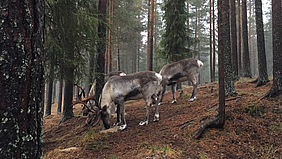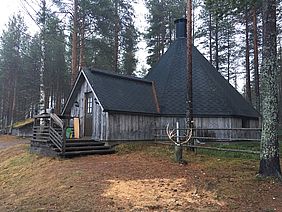After reviewing the regional energy situation of Västernorrland in Sweden, this week let’s travel to Lapland (Finland), another SMARCTIC partner region, and discover the kind of energy sources they mainly use in this beautiful northern area.
Located in north of Finland, the regional size of Lapland is of 100,370 km² (92,667 km² land and 7,699 km², water). The population is of 177,000 people but, did you know that the population of reindeers is about double this? The biggest city of the region is Rovaniemi, with 63,000 inhabitants and the official home of Santa Claus!
According to our project partner Hannu Korhonen, from Lapland University of Applied Sciences, the main sources of energy for light, heat and other essential public / domestic services are hydropower, as well as local wood fuels, peat, and forest industry effluents. “At present, Lapland is slightly overfunded in terms of electricity production, and the share of renewable energy in electricity production is over 90%”.
Fuel poverty is not an issue in Lapland. However, this region also has relevant policies, strategies, and targets for improved energy efficiency. The objective is to reduce CO2 emissions and increase the use of renewable energy. “Lapland's energy vision is to utilize Lapland's large energy resources so that Lapland's know-how and livelihoods develop, and energy solutions support Lapland's vitality”, adds Korhonen. Our partner explains that investments are made in competitive energy solutions that support industries and the regional economy, utilizing northern know-how and innovation capacity. “Energy resources are utilized in an environmentally friendly and sustainable manner, respecting Lapland's unique nature. There is a desire to diversify energy production, based on a variety of production technologies and fuels, so that the full potential is exploited”, concludes Korhonen.
The SMARCTIC project takes a new innovative approach to reducing energy usage in the Northern Periphery and Arctic area. Stay tuned to learn more about the progress made in Lapland and the rest of project partner regions!
Find out more (in Finnish) about the regional energy situation.
Would you like to learn more? Read about the regional energy situation in Västernorrland.


